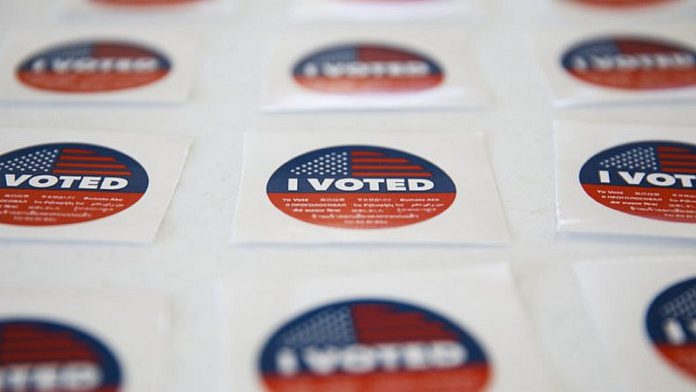By;brightwebtv

America is touted as the leader of the free world due to its strong democratic principles and for being the shining example of modern governance system. One of what has made them a global force is their free fair manner their elections are held.
On November 8, voters across America will go to the polls in the midterm elections for the first referendum on Joe Biden’s presidency. The outcome will have a profound impact on the direction of the United States for the next two years. The event is called the ‘midterm elections’ because it happens in the middle of the presidential term.
Mr Biden will not be on the ballot, but candidates for Congress in every corner of the US will be. Democrats currently hold wafer-thin majorities in both houses of Congress. But if the Republicans take over, they will be able to block much of what Mr. Biden and the Democrats aim to achieve until the next election in 2024.
They happen two years after the election of a president and determine which party controls Congress. If the president’s party does not control Congress, it becomes very difficult to pass legislation.
All 435 seats in the House of Representatives, the lower chamber of Congress, are being contested.
About one third of the 100 seats in the Senate, the upper chamber, are also up for election. Senators are elected to six-year terms on a rolling basis. That means, every two years, one third of the senators come up for re-election. Each of the 50 states has two senators. Currently, all class three seats are up for re-election, having last been elected in 2016. Winners will serve a six year term from January 2023, which will end in 2029
In addition, many states have aligned their local elections to take place at the same time. That means there are races taking place for the governorships of 36 states. With a fast rising rate of inflation and prices of gas and groceries skyrocketing, Republicans see it as an advantage to recapture both houses. Since 1994, a sitting President’s party has lost at least one midterm election.
Republicans took control of both houses during President Bill Clinton’s first term in 1994. Democrats won both houses during President George W. Bush’s second term in 2006. Republicans took control of the House in 2010 during President Obama’s first term and the senate in 2014 during President Obama’s second term. Democrats retook the House majority in 2018 during President Donald Trump’s first term.
Thirty House Republicans and Twenty Democrats are retiring this year. In the Senate race, six Republicans and one Democrat are retiring. This will be the first time in U.S. history in which multiple Senate races in the same year are contested between two African-American nominees (Georgia and South Carolina). Three previous elections have taken place with two major-party African-American candidates.
In contrast to 2018, when Democrats were defending 10 seats in states that Donald Trump won in 2016, Democrats hold no seats in any state that was won by Trump in 2020. Meanwhile, the Republicans are defending two seats (Wisconsin and Pennsylvania) in states President Joe Biden won in 2020, compared to one seat (Nevada) in a state that Hillary Clinton won in 2016 and was held by Republicans.
 The Spot Of Latest Trending News And Leaks Log On For Latest Political News, Health Related Issues And More
The Spot Of Latest Trending News And Leaks Log On For Latest Political News, Health Related Issues And More









